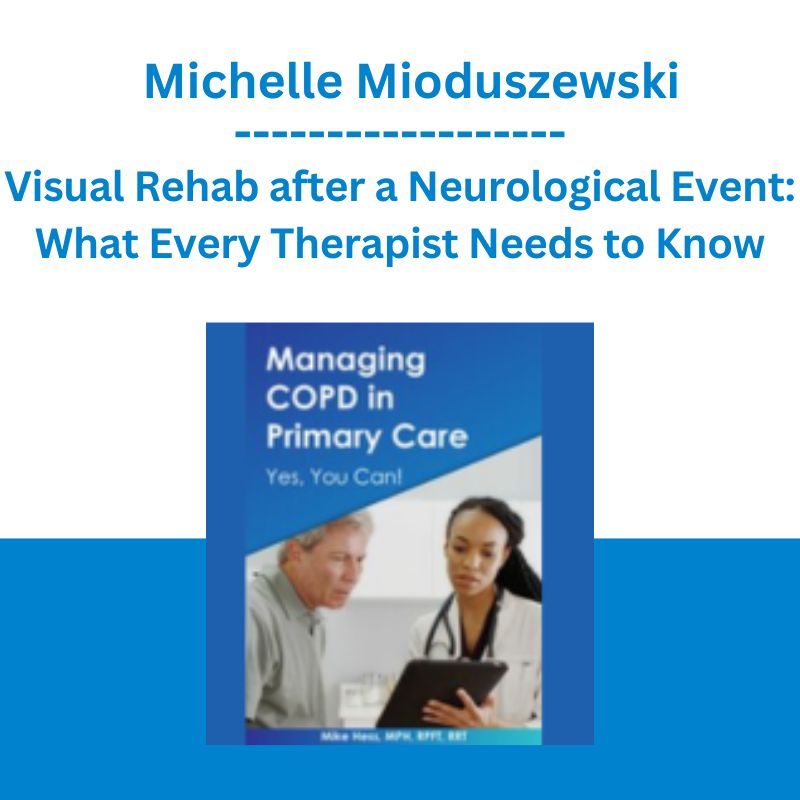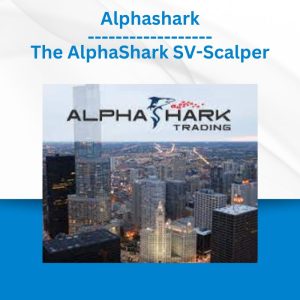*** Proof of Product ***
Exploring the Essential Features of “Visual Rehab after a Neurological Event: What Every Therapist Needs to Know – Michelle Mioduszewski”
When working with clients after a neurologic event, therapists immediately recognize physical deficits and began to create a list of functional impairments. How often does this include an assessment of vision or consideration of the contributions of visual impairment to functional limitations? You will get a clear foundation for how to assess vision and recognize visual field loss vs visual inattention and how this impacts movement, balance and ADLs. You will learn effective techniques to conduct a vision screening after a stroke or brain injury and how to implement treatment strategies into your plan of care for improved outcomes.
Speaker
Michelle Mioduszewski, MS, OTR/L
Niagara Therapy, LLC
Michelle Mioduszewski, MS, OTR/L, has been practicing occupational therapy in acute, inpatient rehabilitation, and outpatient settings throughout her career. Visual rehabilitation following neurological events has been an area of focus. Michelle owns and operates Niagara Therapy, LLC, a team-oriented practice based in Erie, PA that offers OT, PT, and SLP to adults and children with neurological concerns. She also consults for legal, education, and professional situations.
Michelle is the AOTA Administration and Management Chairperson for the Rehabilitation and Disability Special Interest Section, National MS Society Board of Trustees, and is a National MS Society Partner in Care Designation. She was trained in NDT and Neuro-IFRAH (NDTC), Bioness Certified, REO Certified, SAEBO Certified, and specialized in vision and cognitive rehabilitation. A published writer by AOTA Press, she also teaches on topics such as IASTM, Neuro-Rehab/Neuro-Handling, vision, cognition, spasticity, ergonomics and complex wheelchair evaluations.
Speaker Disclosures:
Financial: Michelle Mioduszewski maintains a private practice. She receives a speaking honorarium and recording royalties from PESI, Inc. She has no relevant financial relationships with ineligible organizations.
Non-financial: Michelle Mioduszewski is a member of Consortium of MS Centers and the National MS Society Board Member for the Clinical Healthcare Advisory Committee.
Objectives
- Differentiate visual attention, field loss, and hemispatial inattention (neglect).
- Develop effective techniques for assessing field loss and visual spatial inattention.
- Investigate current best practices for neurological vision rehabilitation.
- Develop an understanding of vision-based rehabilitation and the rehabilitation process.
Outline
- Visual Rehab Following A Neurological Event
- Anatomy and review of visual pathway
- Pathology
- Sequence of action
- Relationship of eye/brain anatomy to perception/processing
- Best practices for Assessment
- Screening methods
- Visual field loss
- Visual inattention
- Best Practices for Treatment
- Visual field loss
- Visual inattention
- Documentation
- Objective data to incorporate
- Demonstrating improvement
- Justification for continued treatment/Medicare
- Case Studies and Conclusion
- Visual field loss
- Visual inattention
- Red flags
- When should you refer?
Target Audience
- Chiropractors
- Nurses
- Physical Therapists
- Physical Therapist Assistants
- Occupational Therapists
- Occupational Therapy Assistants
- Speech Language Pathologists
- Other Rehab Health Professionals
Please see the full list of alternative group-buy courses available here: https://lunacourse.com/shop/









